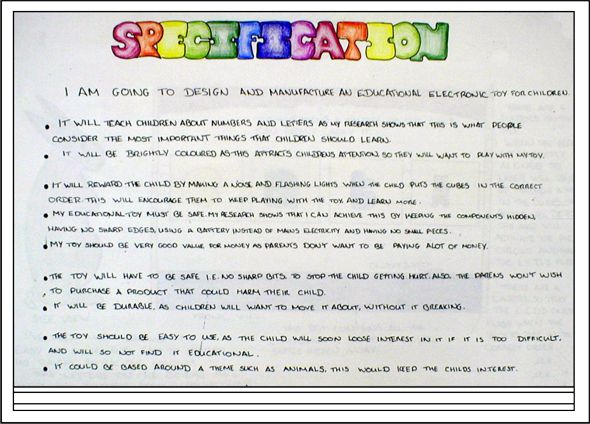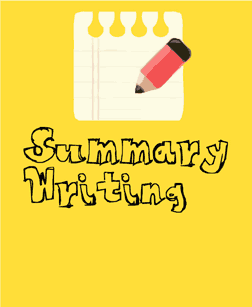Saturday, September 28, 2013
Year 11, you have finished your Investigate - Criterion A. Please submit a paper version today.
Next, I suggest that you familiarize yourself with the tool that you will use to create your teaching aid. Please complete a tutorial to help you be able to use the programme you chose to its fullest potential.
IB Learner Profile - Inquirer
Wednesday, September 18, 2013
Investigate - 3. Formulate A Design Specification
 |
| http://www.technologystudent.com/images4/specy3.jpg |
The third step of the Investigation is 3. Formulate a Design Specification.
The IBO defines Design Specification as: A detailed description of the conditions, requirements and restrictions with which a design must comply. This is a precise and accurate list of facts such as conditions, dimensions, materials, process and methods that are important for the designer and for the user. All appropriate solutions will need to comply with the design specification.
To get a 5/6 the student: describes detailed methods for appropriate testing to evaluate the product/solution against the design specification.
Your task is to create a detailed list of design specifications and justify your choice. Then create tests to evaluate your product.
If you have finished your Investigation I suggest that you familiarize yourself with the tool that you will ultimately use. In other words, please do a tutorial to help you be able to use the programme you chose to its fullest potential;-)
IB Learner Profile: Inquirer
Learning objective: The student will list the specific requirements that must be met by the product/solution and design tests to evaluate the product/solution against the design specification.
Remember . . .
Sources of information: Carefully consider the sources of information that you use. Use experts in the field. Remember, you will need a bibliography. You will need to evaluate your sources.
Don't forget:
1. Make sure your research is pertinent
2. Make sure your research is complete-it's your responsibility to be clear and concise
3. You need to use a range of sources
4. Make sure your research work is clearly and attractively presented
Appropriate language to use when documenting your research:
From my research I found out . . .
I have discovered that . . .
My conclusions are that . . .
I have kept my research relevant by. . .
Based on my research I can conclude . . .
IB Learner Profile: Inquirer
Learning objectives: independently identify meaningful questions, carry out web search, select and organize appropriate sources and evaluate them.
Wednesday, September 11, 2013
Investigate - 2. Develop A Design Brief

Good Morning Year 11.
Now on to the Design Brief.
1. Write a sentence or two to introduce this portion of your Investigation.
2. Then follow these learning objectives to success,
-formulate and discuss appropriate questions (at least 5) that guide the investigation - this means that you should create questions and then do research that will help you solve the problem
- identify and acknowledge a range of appropriate sources of information - use in-text referencing and create a bibliography
-collect, analyse, select, organize and evaluate information - this deeper analysis of your research will lead to higher marks
-evaluate your sources of information- who are your sources? are they appropriate? are they experts in the field?
According to the assessment rubric. . .
To get a 1/2: The student investigates the problem, collecting information from sources.
To get a 3/4: The student investigates the problem, selecting and analysing the information from some acknowledged sources.
To get a 5/6: The student critically investigates the problem, evaluating information from a broad range of appropriate acknowledged sources.
Learning objectives: independently identify meaningful questions, carrry out web search, select and organize appropriate sources and evaluate them.
Monday, September 9, 2013
Investigate - Identify the Problem

Year 11 -
INVESTIGATE
1. Identify the Problem
What is a design brief? Click here
It's important to organise your document in a formal way. This is the introduction to your project.
Students identify the problem to be solved.
- evaluate the importance of the problem for life, society and the environment
- outline the design brief
Let's look at the "Identify the Problem" tab above for ideas on how to proceed.
According to the MYP Technology Assessment Rubric . . .
To get a 1/2: The student states the problem.
To get a 3/4: The student describes the problem, mentioning its relevance.
To get a 5/6: The student explains the problem, discussing its relevance.
Now, look at this vocabulary: states, describes, explains. How are they different?
Look at these words: mentioning, discussing. How are they different?
MYP definitions:
Describe: To give a detailed account
Explain: To give a clear account including causes and reasons or mechanisms.
Discuss: To give an account including, where possible, a range of arguments for and against the relative importance of various factors and comparisons of alternative hypotheses.
Learning objective: evaluate the importance of the problem for life, society and the environment and outline the design brief.
Sunday, September 8, 2013
Summary Writing
 |
| Add http://cat.wordpandit.com/wp-content/uploads/2011/09/summary_writing.gifcaption |
Year 11, one of the primary focuses of the MYP Design Cycle is research. It is important to know how to conduct research and how to summarize your findings. Let's take a few minutes to go over the exercise on the page entitled, "Writing a summary".
Remember, as we continue along this project the following phrases can help you record your findings clearly and appropriately:
- From my research I found out . . .
- I have discovered that . . .
- My conclusions are that . . .
- I have kept my research relevant by . .
Monday, September 2, 2013
Welcome back
 |
| http://stand.org/sites/default/files/styles/blog_post/public/Illinois/back_to_school_banner.jpg |
I hope you had a great summer and are ready to start a new school year.
Our projects for this year are:
Term 1 - Teaching Aid
Term 2 - University Application Video
Term 3 - Digital Portfolio
But before we get started let's write the blog address in our diaries, set up some rules that we can all live by and recap the design cycle.
Let's have a great year!
Subscribe to:
Posts (Atom)

.png)